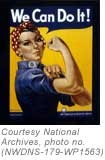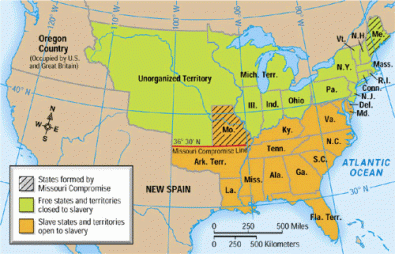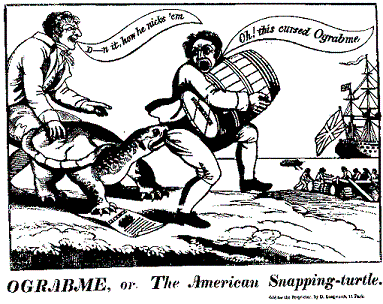History Quizzes
This website has numerous history quizzes ranging from colonial life to modern day America. These quizzes can help expose students to vocabulary words that they may encounter on the U.S. History and Government regents exam. And although students may not understand every word in the question these exercises can help students to start to figure out the meaning of words based on the context in which they are presented. This website also has Document Based Question dos and don’ts that can give students effective strategies for test taking. They also list actual document based questions from previous tests that have been released by the College Board.
| “..Whereas … King James II, … did attempt to undermine … the laws and liberties of this kingdom… Therefore, the Parliament declares: 1. That the King’s supposed power of suspending laws without the consent of Parliament is illegal. 4. That the levying of taxes for the use of the king without the consent of Parliament is illegal. 8. That the king should not interfere with the election of members of Parliament. 13. And that to redress grievances and amend, strengthen, and preserve the laws, Parliament ought to be held [meet] frequently.” –The English Bill of Rights, 1689 |
“We the Japanese people, acting through our duly elected representatives in the National Diet [legislature], resolve that never again shall we be visited with the horrors of war through the action of government, do proclaim that sovereign power resides with the people and do firmly establish this Constitution. Government is a sacred trust of the people, the authority for which is derived from the people, the powers of which are exercised by the representatives of the people, and the benefits of which are enjoyed by the people. This is a universal principle of mankind upon which this Constitution is founded. We reject and revoke all constitutions, laws, ordinances, and rescripts in conflict herewith.”
–The Japanese Constitution of 1947
|
Examples of Picture Document Based Questions
Document based questions come in two forms. The first form, pictures, is what I’m am showcasing with this post. This form requires students to interpret pictures and the words in the pictures using their knowledge of the historical background of the picture. It is imperative that students have a solid knowledge of historical vocabulary because these picture documents often come in the form of political cartoons that use historically specific vocabulary. The other form of document based questions will be addressed in my next post.
Picture Document Based Questions Podcast
http://www.phschool.com/curriculum_support/brief_review/us_history/essay_questions/unit2.cfm
Document Based Question Strategies Podcast part I
Grading Strategies for Document Based Essays
This website made a list of grading guidelines for essays written with document based questions. Note that grammatical errors are not mentioned in these guidelines, which I found to be interesting. In a course, such as Social Studies, where literacy and writing are so fundamental, it does not matter if a student has numerous spelling or stylistic errors. But then again, would students concentrate too much on grammar and less on the actual content of the exam if there were grammatical grading guidelines. What do you readers think? Should points be deducted for poor grammar?
Reading and Vocabulary in the Content Area
Understanding content specific is essential for a successful student in a history class. In history, student knowledge and comprehension is almost always tested with reading and writing. Therefore, it is necessary for students to have a basic understanding of content specific vocabulary in history. Jill Kerper Mora put together some strategies for increasing student understanding on content specific vocabulary.
Mora listed several ideas on her website to bolster student understanding:
–Identify key vocabulary and concepts in the reading selection. List the vocabulary words in one column and a short phrase that illustrates the concept or a short definition. Students can do a matching activity after reading the passage to check for understanding.
– In an activity called List-Group-Label, have students develop a list of words or expressions based on the textbook reading. Record 25-30 words and group them according to the concepts they represent, labeling each category.
– Have students create “Possible Sentences” to learn word meanings and to predict ideas. Identify key vocabulary and have each student construct sentences for at least two of the words. Record these sentences on the board or on chart paper, underlining the important words.
– Have students outline the content. Based on the outline, have students write brief explanations or definitions of a concept in their own words. Then have students write short narratives to elaborate on the outline. This can be done in a jigsaw activity, with groups of students responsible for a paragraph or two of a longer narrative.
Stategies for Reading in the Social Studies Classroom
In the first three pages of this article, Gretchen Coe and Anne Fitzpatrick discuss strategies for improving reading in middle schoolers. They say that student understanding in reading drops after approximately 4th grade when reading switchs from fiction to social studies texts. Coe and Fitzpatrick list three obstacles to student comprehension. First, many social students texts are written above the reading comprehension of students, and students often encounter new or difficult vocabulary. Second, students often lack background knowledge of historical subjects. Third, the writing style of historical textbooks may be “drier” than the fictional texts students have been used to.
Coe and Fitzpatrick present three activities to improve reading in the middle classroom. First, they created a checklist for students to go over before they read a fictional text and another list for when they read a non-fictional text. The second activity is a very effective tool for student understanding called the splash method. In this method the teacher selects 20 to 25 words that represent important people, places, or ideas in history and puts these words together on a page. This paper is then handed out to students and they are to make lines between the words and show how they are related or connected. The third stategy is to have students talk aloud regarding their research and previous knowledge on a subject. This is a very effective method that William Strong supports in his book Write for Insight: Empowering Content Area Learning, Grades 6-12. Also, Dr. Sharon Peck is a firm believer in the power of talking between students in the classroom. She feels that a helpful peer review can give students an alternate perspective on their work, and can be very beneficial in promoting peer interaction.
http://www.world-affairs.org/globalclassroom/curriculum/ReadingToLearn2.pdf
I am a sophomore history major at SUNY Geneseo. Most people say I’m a much younger, much better looking version of Randy Wellington (rlw33.wordpress.com). I agree with those people. The goal of this blog is to encourage literacy in history by studying content document based questions and content specific vocabulary, which can be very beneficial for students taking history exams, especially the 11th grade U.S. History and Government New York State Regents exam.
Hello world!
Welcome to WordPress.com. This is your first post. Edit or delete it and start blogging!










